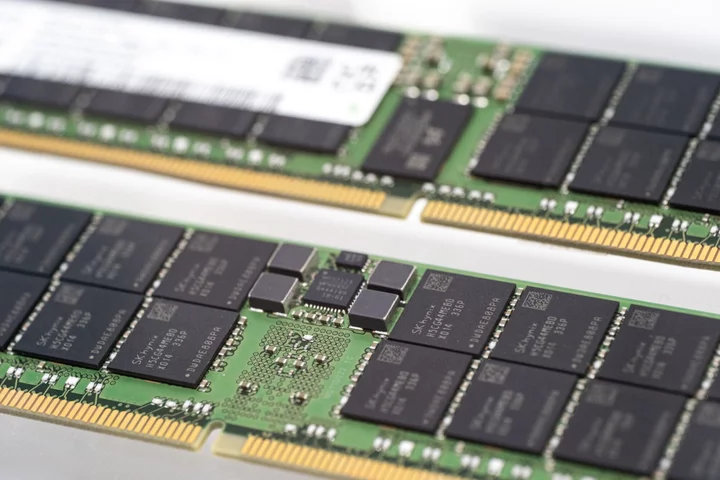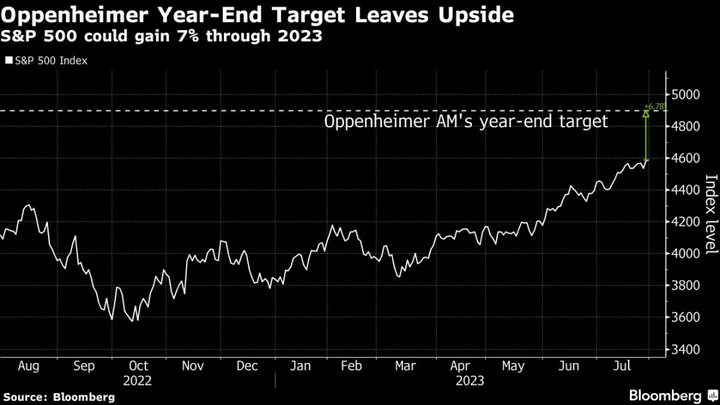SK Hynix Inc. reported a more moderate decline in revenue for the third quarter and said it will increase capital spending, a sign the global semiconductor market may be recovering after more than a year of challenges.
Revenue dropped 17% to 9.07 trillion won, compared with expectations for 8.14 trillion won, according to analyst estimates compiled by Bloomberg. That’s an improvement from a 47% slide in the previous three months and a drop of more than 58% the quarter before that.
Its operating loss shrunk to 1.79 trillion, compared with estimates of a 1.7 trillion won loss. Its net loss of 2.2 trillion won was wider than estimates for 1.55 trillion won loss.
Shares fell as much as 4.3% in early trading, its biggest intraday slide in more than a month.
The world’s No. 2 maker of memory chips and rival Samsung Electronics Co. have struggled through an industry downturn as demand for smartphones and personal computers wanes. Samsung, which reported preliminary results earlier this month, revealed a more modest slide in profit than the previous quarter, which boosted shares.
SK Hynix’s stock has outperformed its larger rival this year, soaring 70% compared with about 23% for Samsung through Wednesday’s close. SK Hynix has benefited from its deal to supply premium high-bandwidth memory chips to Nvidia Corp., whose artificial intelligence chips have been such a hit this year that its market valuation surged to $1 trillion.
“SK Hynix’s 3Q sales might have been better than peers’, due to the firm’s strength in high bandwidth memory (HBM) products, which are used for generative artificial intelligence (AI),” Masahiro Wakasugi, senior industry analyst with Bloomberg Intelligence, wrote ahead of results.
SK Hynix said that it would boost capital expenditures for 2024 compared with this year, although the growth will be minimized to ensure efficiencies and avoid disrupting the market. It will prioritize spending for HBM and other strategic products.
The company’s DRAM division returned to profit after two quarters of losses. It said average selling price rose 10% quarter over quarter, and chips prices are stabilizing after production cuts.
DRAM accounted for about two thirds of the company’s revenue for the quarter, while NAND chips bring in just over a quarter of the overall revenue.
Chipmakers have also been navigating rising political tensions between the US and China, leading to expanding export controls on semiconductors and related equipment. This month, the US granted SK Hynix and Samsung indefinite waivers to acquire the equipment they need to sustain and expand their giant chipmaking operations in China.
(Updates with shares from the fourth paragraph)









